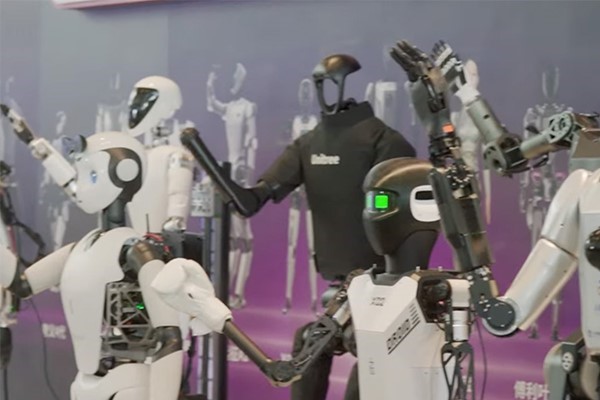
After almost two years of climbing the hype curve, humanoid robots are reaching the point of maturity where it is becoming viable to deploy them into real-world applications. The race is heating up around the world, as dozens of humanoid robot companies put all of their energy, expertise, and knowledge into the creation of this interesting robot form factor.
As reported in the South China Morning Post (SCMP), five Shanghai-based industry organizations have draft a set of guidelines for humanoid robot development in China. These organizations included the Shanghai Law Society, the Shanghai Artificial Intelligence Industry Association, and the National and Local Humanoid Robot Innovation Centre.
The guidelines were published last week in Shanghai during the World Artificial Intelligence Conference (WAIC). The organizations behind the guidelines are advocating for global cooperation, as fledgling companies and mature companies alike all jockey for dominance in this market.
According to the SCMP, 18 humanoid robotics companies demonstrated their systems last week at the WAIC event, including U.S.-based Tesla.
Agility humanoid goes to work
Agility Robotics was not in Shanghai, but it is the first North American company to sell and deploy a humanoid robot into a real warehousing application at GXO. The Agility Robotics Digit was one of the first robots in the humanoid market, with more than a decade of development.
The past 18 months have been a maelstrom of news about the fast-paced progress of humanoid robots, as the companies have attempted to outdo each other week after week with viral marketing videos.
Elon Musk and Tesla have done much to amplify the concept of humanoids and to sell the idea of a future where such robots can do real work on the manufacturing floor, in warehouses, and ultimately (according to Musk) in our homes. Tesla also claimed that it has deployed the Optimus humanoid robot into real manufacturing work, and the company has the advantage of owning its own automotive manufacturing facilities.
This is an advantage for the Optimus product development team, because the team can work closer with their end users than any other humanoid robot company, and close the loop on issues and features. The disadvantage is that Optimus isn’t in the same spotlight as the Digit robot, working at a paying customer facility.
Safety is Job 1
With all of the hype, the group of organizations in China sought to pull a set of guidelines together before all of these young robotics companies got too far ahead of their development efforts and something tragic happened that might cause harm to this emerging market segment.
Echoing the original “3 Laws of Robotics” by Isacc Azimov, the group said it believes that humanoid robots should “safeguard human dignity” and “not threaten human security,” according to the SCMP. Embedded in the hype is the potential for humanoids to replace human labor across a wide variety of applications.
This opportunity enthralls the investors in this technology, but humanoid developers must also be concerned about the nature of robotic controls and safety deployment protocols in the real world. Nobody wants to see a humanoid robot injure or kill their grandmother, child, or pet.
The “Guidelines for Humanoid Robot Governance” aim to promote the ethical and secure development of humanoid robots, aligning with human values, rights, and safety. It advocates for global investment, cooperation, and standardization, with robust intellectual property protection and talent development.
Risk management measures include compliance with laws, ethical use training, privacy protection, and emergency response systems. The guidelines also call for global governance, consensus-based regulation, lifecycle management, safety assessments, public education, and global regulatory integration.
It is important to note that no official safety standard currently exists for the humanoid design. Not having an approved safety standard is a barrier to the broad acceptance of humanoids because every paying customer will have to perform a safety risk assessment before deploying these robots in a factory or warehouse.
The Institute of Electrical and Electronics Engineers has initiated a Humanoid Study Group to explore all of the current worldwide standards and determine where the gaps are for this form factor. The group will also outline what needs to evolve to create standards around testing, safety, and performance of humanoid robots. I am participating in this inaugural working group, so I’ll keep you up to date on the progress of this important project.
Mike Oitzman is Senior Editor of WTWH’s Robotics Group and founder of the Mobile Robot Guide. Oitzman is a robotics industry veteran with 25-plus years of experience at various high-tech companies in the roles of marketing, sales and product management. He can be reached at mo******@*******ia.com






